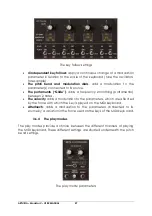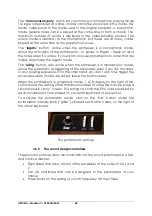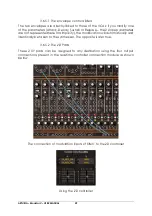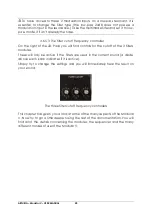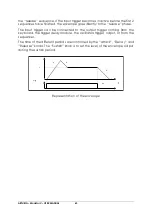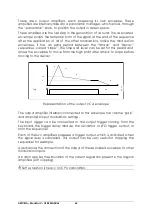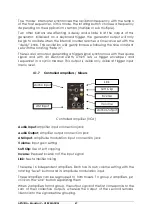
ARTURIA – Modular V – USER MANUAL
54
A keyboard follow can of course be connected to modulation input. In that
way, the pitch of each notes can be adjust very fine. We can then simulate
the non-linearity of analog keyboard.
The “LFO” position of the display indicates that the oscillator group is no longer
dependant of the keyboard. That is to say, it permanently functions on a
monophonic voice. This function is especially useful when we want to use this
oscillator group as source of low frequency modulation.
Furthermore, each of the keyboard follows can activate the response of
oscillators and filters to portamento and pitch bend.
4.1.2.2
Slave oscillator 921B
Oscillator 921B
Frequency: Sets the frequency of the oscillator. By left click, setting by semi-
tone, by right click fine setting.
Range: Setting of the oscillator range. (low, 32, 16, 8, 4, 2)
Synchronization: Synchronization interrupter Soft/Hard
Synchro input: Menu to select the synchronization oscillator
FM Inputs: Frequency modulation input connection jacks
Outputs: Connection jacks for the four oscillator outputs
The 921B type slave oscillators possess four outputs that can be used
simultaneously: sawtooth, sinusoid, triangle, square.
There is also an output generating a trigger signal synchronous with the square
signal and with an identical width, which lets us trigger envelopes and
Frequency
Range
Synchronization
Synchro input
FM Inputs
Audio outputs of
the 4 wave forms








